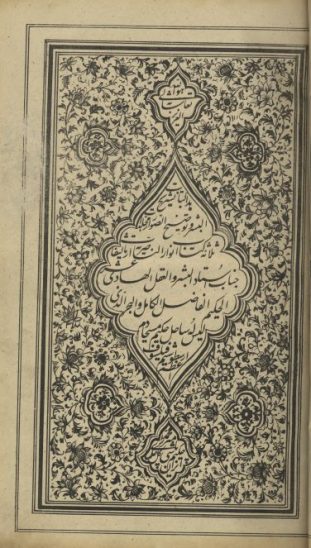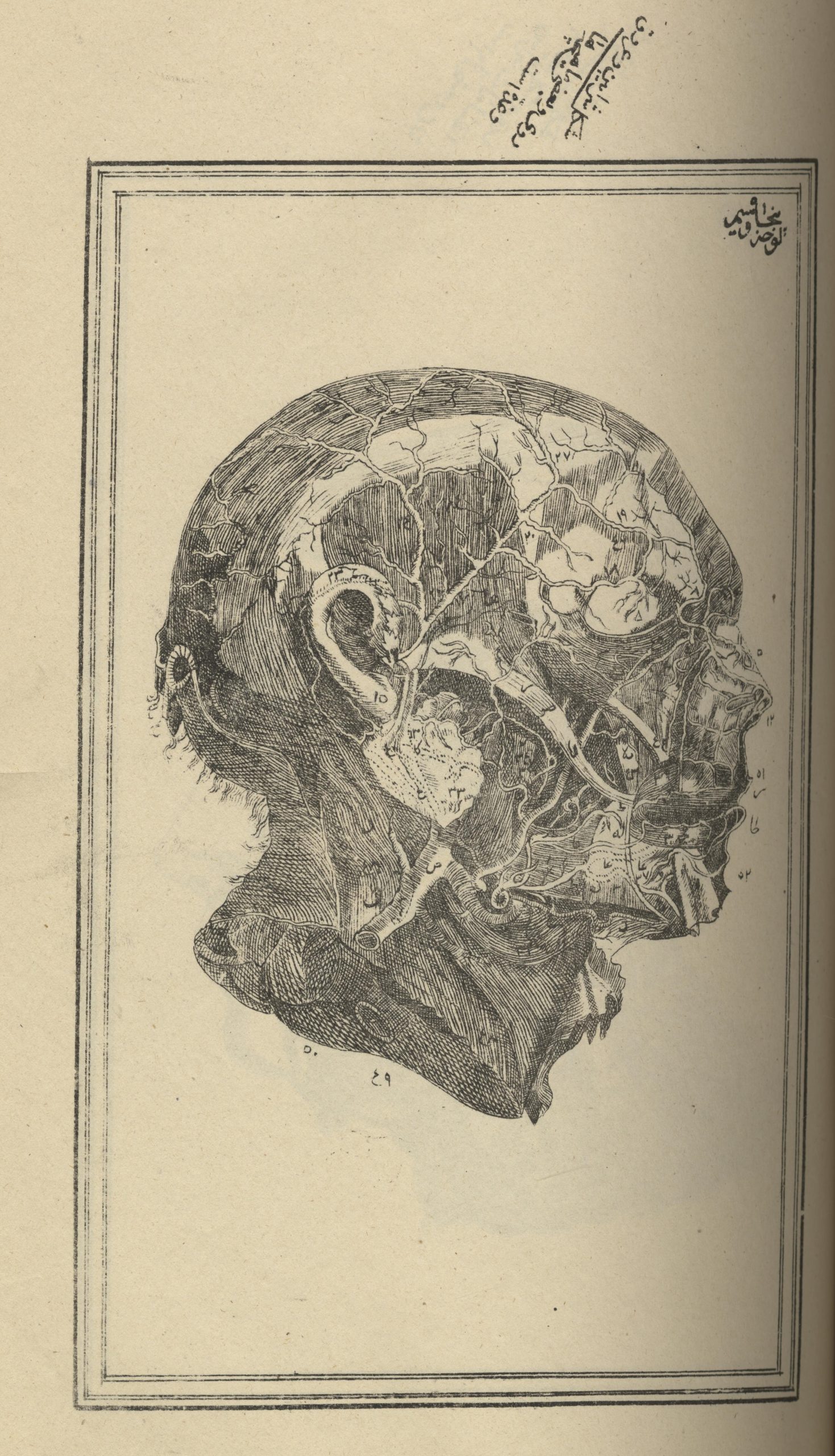A Qajar Anatomical Treatise, dedicated to Nasir al-Din Shah. [Kitab Mustatab Anwar al-Nasiriyyah]. THREE PARTS IN ONE VOLUME.
‘Abd al-Sabur Mirza Muhammad.
Synopsis
In medical sciences, the Qajar period saw a movement away from traditional methods of medicine to more advanced practices, drawn in part from medical discoveries in contemporary Europe. In the same year in which this volume was printed, an Austrian, Jacob Polak (1818-1891), was appointed royal physician to the court of Naser ad-Din Shah. He had already written several volumes on human anatomy and also established the first modern course on human anatomy at the Dar al-Funun, and he may well have been the driving force behind the composition of the text.
In 1271 A. H. (1854 CE) Persian physician Mirza Mohammad-Vali Hakimbashi issued ‘Cheragh haa rewshenaaa der asewl pezeshekea’ [Illumination of the fundamentals of medicine] from Tabriz at Dar al-Tabae [State Printing House]. This lithographed book was the first work to introduce Western anatomical illustration into Persian Culture.
During the 19th century, under the rule of the Qajar dynastyOffsite Link, Persia increased its contacts with European governments, while at the same time enjoying periods of relative political stability and a growing sense of nationalism. In the arena of public health and medical education, these influences resulted in “a mounting sense of responsibility on the part of the Government with regard to its citizenry.
In 1851, at the urging of Prime Minister Mirza Taghi Khan Farahani, known as Amir Kabir (امیرکبیر), Persia established its first modern institution of higher learning, the Dar al-Fonun [Polytechnic, now the University of Tehran), which included a medical school for the training of army physicians.
As part of this effort to modernize medical education in Persia, medical textbooks such as Mirza Mohammad-Vali’s Illumination of the Fundamentals of Medicine were written or translated by Persian authors and printed by lithography for publication by the Dar al-Fonun or the Dar al-Tabae, the state printing house established in the 1840s. Mirza Mohammad-Vali, who had been named chief physician of the Persian army in 1852, was also supervisor of the physicians at the Government Hospital and most likely taught at the Dar al-Fonun. Mirza Mohammad’s dependence on Western sources in this early period of modern Persian medical education is evident in his book’s numerous anatomical illustrations, adapted from Polak, Vesalius, Scarpa, Fabrici and other European authors.
The Qajar period also saw the introduction of the lithographic press, the first successful method for the mass production of books in Persia. Several attempts had been made to establish letterpress printing in Persia beginning in the 17th century, but casting type in Arabic script raised technical problems beyond those faced by typographers creating Roman typefaces, and it was not until the 1820s, when the first lithographic printing press began operating in Tabriz, that books, newspapers and other printed material began to be manufactured in Persia on a large scale.








